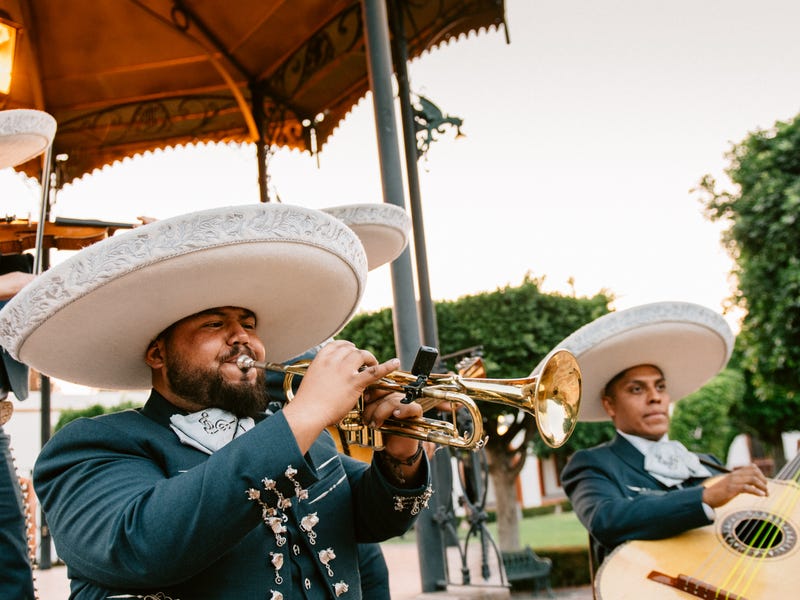Learning the seasons all over again may seem like a weird thing to do when you already learned them in elementary school. However, learning the seasons in Spanish can help you keep your cool in heated circumstances.
Learning the seasons in Spanish can be great for planning a fun summer vacation in Ibiza or a winter ski trip to Bariloche. So, if you’re learning Spanish for general purposes or to acclimate to life in a Spanish-speaking country, this should help you keep your social calendar busy.
However, you should also pay close attention to the Spanish seasons if you’re learning Spanish for business. Many companies have highly seasonal trends, meaning that you’ll be lost if your boss or colleagues talk about business strategies for the summer and you haven’t yet mastered your seasons.
Plus, most companies operate on a quarterly basis that roughly follows the seasons, so it’s not uncommon for people to refer to the second quarter as the spring quarter and so on. So, even if you don’t work at a company with highly seasonal cycles, you’ll still want to learn the seasons to keep up with the financial results of your company.
Another reason to learn the seasons is to complement your ability to tell the time in Spanish and talk about dates. You may have already learned how to talk about the months in Spanish and perhaps even the days of the week in Spanish, so knowing the seasons will help you talk about time and dates more naturally. Sometimes, you’ll just want to refer to a season as opposed to a specific month or date, such as when talking about your summer plans.
So, let’s get started with the seasons of the year in Spanish!
The seasons in Spanish
The first thing you should know is how to actually say season in Spanish. In Spanish, a season is a temporada. However, keep in mind that there’s another word for this: estación. Specifically, when talking about the seasons of the year, we say “las estaciones del año.”
| English | Spanish | IPA | Pronunciation |
| Summer | El verano | βɛˈɾano | veh-rah-no |
| Autumn / Fall | El otoño | oˈtoɲo | oh-toe-nyoh |
| Winter | El invierno | ĩmˈbjɛɾno | in-vee-air-no |
| Spring | La primavera | pɾimaˈβɛɾa | pre-mah-veh-rah |
| Season (time) | La estación del año | ɛstaˈsjõn dɛl ˈaɲo | ehs-tah-see-ohn del ah-nyoh |
| Season (period) | La temporada | tɛ̃mpoˈɾaða | tem-po-rah-dah |
| The rainy season | La temporada de lluvia | tɛ̃mpoˈɾaða ðe ˈʝuβja | tem-po-rah-dah deh yoo-vee-ah |
| The dry season | La temporada de sequía | tɛ̃mpoˈɾaða ðe seˈkia | tem-po-rah-dah deh seh-key-ah |
Summer in Spanish
What’s not to love about summer in a Spanish-speaking country? From an ice-cold glass to sangría in Barcelona to a refreshing bowl of Peruvian cebiche, there is no shortage of fun ways to enjoy the summer in Spanish-speaking countries.

| Country | Summer months range | Additional notes |
| Spain | June–August | The heat in most of Spain can be pretty extreme during the summer. |
| Mexico | June–August | Summer can be the coolest time of the year in many parts of Mexico because it’s also the rainy season. |
| Cuba, Dominican Republic, Puerto Rico | June–August | Summers in the caribbean can be extremely humid. |
| Guatemala, Honduras, Nicaragua, El Salvador, Costa Rica, Panama, Colombia, Venezuela, Ecuador | June–August | Summers in Central America can be pretty tame thanks to its proximity to the equator. The South American countries of Colombia, Venezuela, and Ecuador are also in this list because of their proximity to the equator. |
| Argentina, Peru, Chile, Bolivia, Paraguay, Uruguay | December–February | If you’re dreaming of a white Christmas, then stay out of South America. The “winter” holidays are actually the “summer” holidays down here! |
Notable summer holidays in Spanish
Día del padre (3rd Sunday of June):
Don’t forget to celebrate your father on his special day! While Mother’s Day tends to be a bit busier, Father’s Day is still widely celebrated across Spanish-speaking countries.
Día del abuelo (August 28):
And, of course, we wouldn’t be here without our grandparents. So, if your grandparents are still with us, make sure to take them out to lunch, send them a handwritten note, or simply give them a call to wish them a good day! They’re certainly appreciate the gesture. Family values hold a very special place in Spanish culture.
Fiestas de la Vendimia (August):
If you read our article on beverages in Spanish, you already know that Spain and Latin America have some wonderful wine regions. So, the summer harvest months are important for wine producers. The exact date of this holiday varies depending on the wine region, but make sure you attend at least one event if you happen to be near one during la Vendimia!
Spanish summer words
If you just can’t wait to start making plans for the summer in Spanish, then here’s a list of a few words to get you started. Just remember that not every region is hot and sunny over the summer, so don’t plan to bring your lentes de sol if you’re visiting Mexico City in July!
| English | Spanish | IPA | Pronunciation |
| Hot | Caluroso | kaluˈɾoso | kah-loo-roh-so |
| Sunny | Soleado | soleˈaðo | soh-leh-ah-doe |
| Dry | Seco | ˈseko | seh-coe |
| Thirsty | Sediento | seˈðjɛ̃nto | seh-dee-ehn-toe |
| Gelato | El gelato | xeˈlato | yeh-la-toe |
| Swimming | Nadar | naˈðaɾ | nah-dar |
| Beach | La playa | ˈplaʝa | plah-ya |
| Pool | La alberca | alˈβɛɾka | al-bear-cah |
| Towel | La toalla | toˈaʝa | toe-ah-yah |
| Sunscreen | El protector solar | pɾotek̚ˈtoɾ soˈlaɾ | pro-tec-toor soh-lar |
| Sunglasses | Los lentes de sol | ˈlɛ̃ntes̬ ðe ˈsol | lehn-tess deh sol |
Fall in Spanish
Luckily, there’s only one way to say fall in Spanish: el otoño. This is one of the best times of the year to visit Mexico, as you’ll likely get to enjoy some of the día de los muertos celebrations. This holiday is a fun way of honoring the dead and was the inspiration behind the Disney movie Coco.
Check out the short clip below for more details on how Coco honors día de los muertos. If you’re up for a challenge, why not watch the entire movie in Spanish?
How Coco Honors Día de los Muertos | Disney+

| Country | Fall months range |
| Spain | September–November |
| Mexico | September–November |
| Cuba, Dominican Republic, Puerto Rico | September–November |
| Guatemala, Honduras, Nicaragua, El Salvador, Costa Rica, Panama, Colombia, Venezuela, Ecuador | September–November |
| Argentina, Peru, Chile, Bolivia, Paraguay, Uruguay | March–May |
Notable Fall holidays in Spanish
Día de los muertos (November 2nd):
As mentioned above, día de los muertos is a very popular celebration all over Mexico. You’ll see a number of decorations all over the city, including altars, colorful papers, and candy skulls.
Día de acción de gracias (3rd Thursday of November):
While Thanksgiving isn’t normally celebrated in Hispanic culture, many Spanish-speakers who live in the US and Canada celebrate it today. You may also find that kids who attend bilingual schools in Spanish-speaking countries have some sort of Thanksgiving celebration.
Halloween (October 31st):
Halloween is celebrated all over the world, and Hispanic countries are no exception. While most call it Halloween, you may also hear the name víspera de todos los santos.
Spanish Fall words
If pumpkin spice season is your favorite time of the year, you’ll definitely want to take a look at the table below with some of our favorite Spanish fall words. And if you’re wondering how to order coffee in Spanish with some pumpkin spice, you’ll be happy to know that the English name is used–pumpkin spice!
| English | Spanish | IPA | Pronunciation |
| Leaves | Las hojas | ˈoxas | oh-hahs |
| Orange | Naranja | naˈɾãnxa | nah-ran-hah |
| Cooling down | Enfriar | ɛ̃mˈfɾjaɾ | ehn-free-are |
| Harvest | La cosecha | koˈseʧa | koh-seh-cha |
| Pumpkin | La calabaza | kalaˈβasa | cah-la-bah-za |
| Scarecrow | El espantapájaros | ɛspãntaˈpaxaɾos | ehs-pan-tah-pah-hah-ross |
| Equinox | El equinoccio | ekiˈnoksjo | eh-key-noc-see-oh |
| Solstice | El solsticio | solsˈtisjo | sols-tee-see-oh |
| Sunflower | El girasol | xiɾaˈsol | he-rah-sol |
| Forest | El bosque | ˈβoske | bos-keh |
Winter in Spanish
When you think of Spanish, you probably don’t think of winter wonderland. And rightfully so, since most of Latin America is blessed with incredible year-round weather due to its proximity to the equator. However, Latin America is also an extraordinarily diverse region from a geographic and landform standpoint.
First, you have the Andes–a series of mountains that parallel the Northwestern Pacific Coast of South America. These impressive mountains reach heights of up to 22,838 feet, making the cities nearby very chilly. Some of the Andean cities include:
- Quito, Ecuador
- Cusco, Peru
- La Paz, Bolivia
- Bariloche, Argentina
Then, we have South America’s southern tip. This region–colloquially referred to as the Southern Cone–is home to Patagonia. This area is extremely cold due to its proximity to Antarctica, which makes it an ideal winter sports destination. Ski towns like Bariloche and Puerto Montt routinely attract snowbirds from all over the world.
So, you’ll surely want to learn some winter Spanish vocab, especially if you want to live in South America at some point. Some Spanish weather vocab will also be extremely helpful as you work your way through the different regions of Latin America.

| Country | Winter months range | Additional notes |
| Spain | December–February | Winters can get cold, with occasional snowfall in most of continental Spain. |
| Mexico | December–February | Mild winters |
| Cuba, Dominican Republic, Puerto Rico | December–February | Warm winters |
| Guatemala, Honduras, Nicaragua, El Salvador, Costa Rica, Panama, Colombia, Venezuela, Ecuador | December–February | Mild winters |
| Argentina, Peru, Chile, Bolivia, Paraguay, Uruguay | June–August | Harsh winters. |
Notable Winter holidays in Spanish
Christmas (December 25th):
As a highly Christian region, Christmas is by far the biggest holiday in most Spanish-speaking countries. However, most people celebrate Christmas on Christmas Eve.
New Years Eve (December 31st):
New year’s eve is a huge party in most Spanish-speaking countries. Check out our blog on how to say happy new year in Spanish to learn a few fun and creative ways to ring in the new year!
Día de los reyes magos (January 6th):
This is a holiday that most English speakers aren’t familiar with. The purpose of this holiday is to commemorate the Three Wise Men, who brought gifts to baby Jesus after he was born. Continuing on with the traditions, parents give presents to their children under the guise of the reyes magos–just like how Santa Claus brings gifts to children.
Spanish winter words
If you enjoy some fun in the snow, check out the following table with some Spanish winter words. So, even if you’re a snowbird flocking to the Caribbean to flee the cold, you’ll find the following vocab very useful.
| English | Spanish | IPA | Pronunciation |
| Cold | Frío | ˈfɾio | free-oh |
| Snowing | Nevando | neˈβãndo | neh-va-doe |
| Freezing | Helando | eˈlãndo | eh-lan-doe |
| Ice | El hielo | ˈɟʝelo | eeh-eh-lo |
| Frost | La escarcha | ɛsˈkaɾʧa | es-car-cha |
| Scarf | La bufanda | βuˈfãnda | boo-fan-dah |
| Gloves | Los guantes | ˈɣwãntes | goo-ahn-tess |
| Snowman | Un mono de nieve | ˈmono ðe ˈnjeβe | mo-no deh nee-eh-veh |
| Hot chocolate | El chocolate caliente | ʧokoˈlate kaˈljɛ̃nte | cho-co-la-teh |
| Snowflake | Un copo de nieve | ˈkopo ðe ˈnjeβe | co-poe deh nee-eh-veh |
| Snowball | Una bola de nieve | ˈβola ðe ˈnjeβe | bo-la deh nee-eh-veh |
| Avalanche | Una avalancha | aβaˈlãnʧa | ah-va-lan-cha |
| To go skiing | Ir a esquiar | ˈiɾ a ɛsˈkjaɾ | es-key-are |
Spring in Spanish
Spring is the season of the Easter Bunny in English-speaking countries, but not so much in Spanish-speaking ones. As you may already know, Spain and most of Latin America are highly religious. More specifically, most follow some type of Christian religion.
This means that Christian holidays are very important for a majority of the population, and are thus deeply-ingrained in the culture. So, while spring does have the same connotations of rebirth and new beginnings, it is also a time of religious significance for most Spanish speakers.
Regardless, you can expect nature to do its thing every spring. The weather gets warmer, the flowers begin to bloom, and rain starts coming in in most places.

| Country | Spring months range |
| Spain | March–April |
| Mexico | March–April |
| Cuba, Dominican Republic, Puerto Rico | March–April |
| Guatemala, Honduras, Nicaragua, El Salvador, Costa Rica, Panama, Colombia, Venezuela, Ecuador | March–April |
| Argentina, Peru, Chile, Bolivia, Paraguay, Uruguay | September–November |
Notable Spring holidays in Spanish
Semana Santa (March or April):
Semana Santa (Holy Week) is the week before Easter and is one of the most important religious holidays in Hispanic countries. Children usually get the entire week off and adults generally get Thursday and Friday off work in observance of Holy Friday. Expect all holiday destinations to be extremely crowded during this week!
Semana de Pascua (March or April):
Semana de Pascua is Easter Week, and, although significantly less important than Holy Week, it’s still observed throughout Spanish-speaking countries. Children usually get the entire week off school too, while adults don’t get any time off for Easter. This means it’s still a popular week for travel, but it doesn’t even come close to the travel mayhem that is Holy Week.
Miércoles de Ceniza (March or April):
Ash Wednesday is a traditional Catholic holiday when people go to church and get ashes on their forehead. This is worth mentioning as schools and employers usually allow everyone to go to church “a recibir las cenizas” (to receive the ashes). You’ll notice that many of your friends and coworkers will wear ashes on their forehead for the entire day. Observers are also required to fast before noon.
Cinco de Mayo (May 5th):
The Mexican holiday celebrated all over the world has become a popular drinking holiday, with many bars and restaurants offering tequila specials. However, Cinco de Mayo isn’t celebrated in Mexico. While many confuse this for Mexican Independence Day (which is September 16), Cinco de Mayo observes the heroic victory of the Mexican army over the French army in the battle of Puebla.
Spanish spring words
The following table with Spanish spring vocabulary will help you out if you’re really passionate about spring–or want to improve as an amateur gardener! If you’re into plants, make sure to check out our article on flowers in Spanish to learn close to 250 unique flower names!
| English | Spanish | IPA | Pronunciation |
| Flowers | Las flores | ˈfloɾes | floh-res |
| New life | Vida nueva | ˈbiða ˈnweβa | vee-da noo-eh-va |
| Birds | Pájaros | ˈpaxaɾos | pah-hah-ross |
| Gardening | Jardinería | xaɾðinɛˈɾia | har-dee-neh-ree-ah |
| Sunny, but cool | Soleado pero fresco | soleˈaðo ˈpɛɾo ˈfɾɛsko | so-leh-ah-doe |
| Sprout | Un brote | ˈbɾote | bro-teh |
| Picnic | Un pícnic | ˈpik̚nik | pic-nic |
| Reborn | Renacer | renaˈsɛɾ | reh-nah-ser |
| Life | La vida | ˈβiða | vee-da |
| Scenery | Un paisaje | pai̯ˈsaxe | pah-e-sah-heh |
The changing of the seasons
If you’re studying the four seasons in Spanish, that likely means that you’re fast approaching the intermediate Spanish level. Congratulations! Getting here is no small feat, and you’ve likely spent many seasons working your way up to this level. Enjoy your progress and keep pushing through–you’ll reach mastery of the language in no time!
And if you feel like you’ve still got some ways to go before calling yourself an intermediate, do not worry! Our Spanish articles are great study resources that will help you get to where you want to be.



